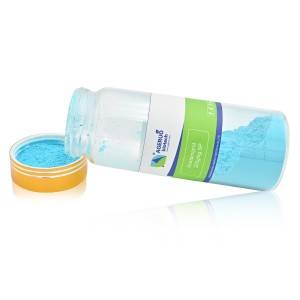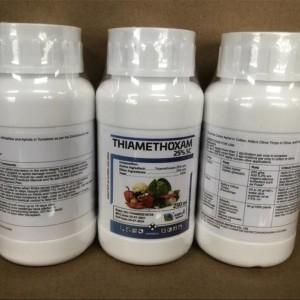Neonicotinoids are a class of widely used neurotoxic insecticides. They are synthetic derivatives of nicotine compounds that kill pests primarily by affecting the central nervous system of insects.
How neonicotinoids work
Neonicotinoid insecticides work by binding to nicotinic acetylcholine receptors (nAChRs) in the insect’s central nervous system, leading to an over-excitation of the nervous system and ultimately paralysis and death. Because of the low distribution of these receptors in humans and other mammals, neonicotinoid insecticides are less toxic to humans and other non-target organisms.
Pests targeted by neonicotinoid insecticides
Neonicotinoid insecticides target a wide range of agricultural pests including, but not limited to, aphids, ticks, leafhoppers, whiteflies, flea beetles, golden beetles, and other beetle pests. These pests often cause severe damage to crops, affecting agricultural production and economic efficienc



Introduction of major neonicotinoid insecticides
1. Acetamiprid
Advantage:
Efficient and broad-spectrum: It has good control effect on many kinds of stinging mouthparts pests such as aphids and whiteflies.
Low toxicity: low toxicity to humans and animals, relatively friendly to the environment.
Strong permeability: it can effectively penetrate into the interior of plants and has a long persistence period.
Applications:
Mainly used to control pests on vegetables, fruit trees, tobacco, cotton and other crops.
2. Clothianidin
Advantage:
Powerful: it has significant effect on many kinds of pests which are difficult to control, such as Japanese beetle, corn rootworm, and so on.
Long persistence: It has a long persistence period in the soil and is suitable for use as a soil treatment agent.
Environmental stability: more stable in the environment, not easy to decompose.
Applications:
Mainly used in corn, soybean, potato and other crops, as well as some garden plants.
3. Dinotefuran
Advantage:
Rapid: It has rapid killing effect and can control the outbreak of pests quickly.
Broad-spectrum: It is effective against a wide range of pests, including sucking mouthparts and chewing mouthparts.
Good solubility: dissolves well in water, making it suitable for spraying and soil treatment.
Applications:
Commonly used to control aphids, whiteflies, leafhoppers and other pests on vegetables, fruit trees, flowers and other crops.
4. Imidacloprid
Advantage:
Widely used: it is one of the most widely used neonicotinoid insecticides.
Highly effective: particularly effective against stinging mouthparts pests such as aphids, whiteflies, leafhoppers, etc.
Multi-purpose: Can be used for soil treatment, seed treatment and foliar spraying.
Applications:
Widely used in food crops, fruit trees, vegetables, flowers and forest plants.
5. Thiamethoxam
Advantage:
Broad spectrum: good control of a wide range of pests, including aphids, whiteflies, flea beetles, etc.
Systemic: absorbed by the plant and conducted to all parts of the plant, providing comprehensive protection.
Low toxicity: safer to the environment and non-target organisms.
Applications:
Mainly used to control pests on crops such as corn, wheat, cotton, potatoes and vegetables.
Neonicotinoid insecticides have become an indispensable class of insecticides in modern agriculture due to their high efficiency, low toxicity and broad spectrum. Although they have significant control effects on target pests, there are some environmental and ecological risks, such as potential harm to beneficial insects such as bees. Therefore, when using these insecticides, attention should be paid to scientific and rational use methods to minimize the adverse effects on the ecological environment.
Post time: Jun-04-2024









